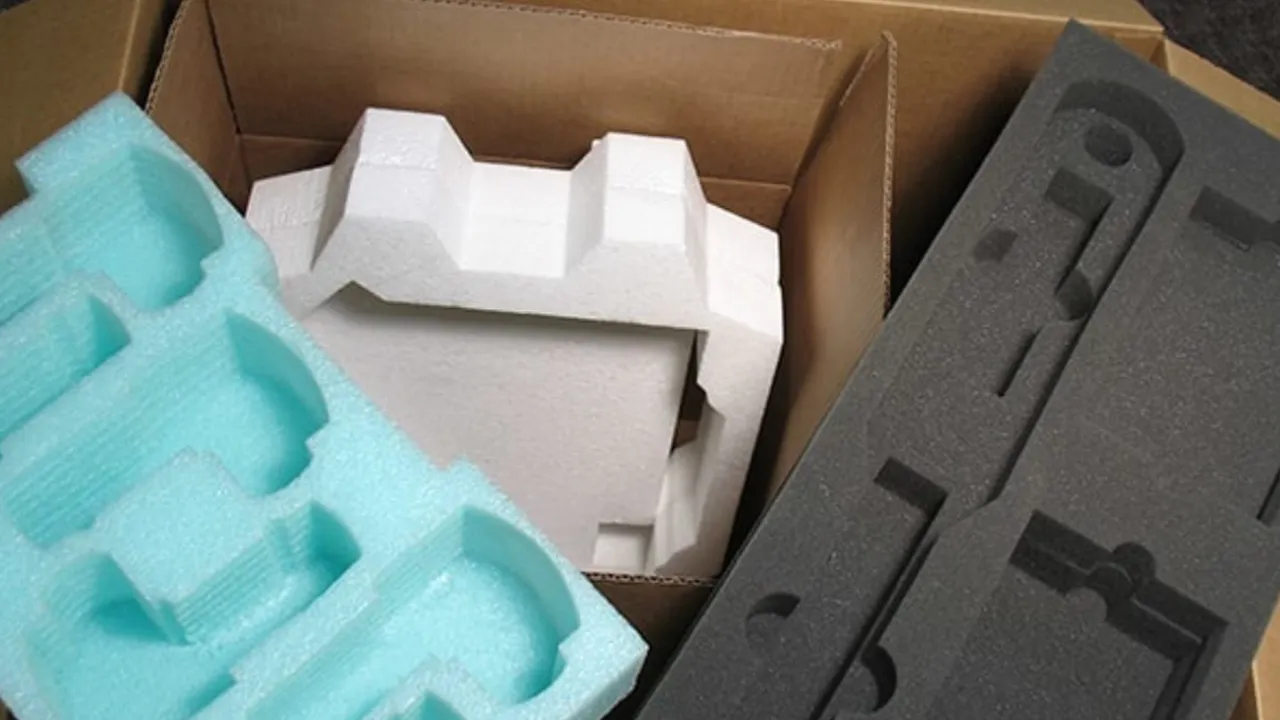04 Jun 2024

Cushioning materials are made to absorb and dissipate the energy from impacts, vibrations, and other forces. Products may experience them during transportation and handling. The science behind these materials is their ability to deform in a controlled way. They convert the kinetic energy from impacts into potential energy. Then, they release it through various mechanisms. Cushioning materials are crucial. They protect products during transportation and handling. They do this by providing a barrier against hazards and forces that can damage the products. Their main role is to absorb shocks. It is also to reduce vibrations and compression. These are forces that products may experience during transit and handling. Impact protection: Cushioning protects products from impact. It absorbs the forces from drops, bumps, or collisions during handling. When a cushioned package is dropped or hit. The cushioning material deforms and compresses. It absorbs the kinetic energy and dissipates it through friction and heat. This helps prevent the transfer of the full impact force to the product, reducing the risk of damage. Vibration dampening: During transportation, products can be subjected to continuous vibrations from various sources, such as vehicle movement, machinery, or even the simple act of handling. Exposure to these vibrations for a long time can cause fatigue. It can also lead to loosening of parts or damage to sensitive ones. Cushioning materials have viscoelastic properties. For example, polyurethane foam packaging material is great at dampening vibrations. It ensures a smoother and safer journey for delicate cargo. Compression protection: Compression can damage products. It happens during stacking or storage. Or, when other packages are placed on top of them. Cushioning materials act as a buffer. They spread the compression load evenly and prevent damage to the product's packaging or contents. Shock and G-force protection: During transportation, products may experience sudden accelerations or decelerations, which can generate significant shock and G-forces. Cushioning materials are designed to absorb and dissipate these forces, preventing them from being transmitted directly to the product and potentially causing internal damage. Immobilization and bracing: Cushioning materials can also play a role in immobilizing and bracing products within their packaging, preventing them from shifting or moving during transit. This helps prevent damage caused by abrasion, rubbing, or impact against the packaging walls. The world of cushioning materials is diverse, with each type offering unique properties and advantages. Here are some of the most commonly used materials in UAE: Foam cushioning materials, like polyethylene foam and polyurethane foam, are famous for their great shock-absorbing ability. These light and versatile materials can be molded into many shapes and densities. This makes them suitable for protecting a wide range of products, from delicate electronics to heavy machinery. The iconic bubble wrap is a classic choice for cushioning fragile items. These air-filled plastic pockets are designed to compress and dissipate energy upon impact, effectively shielding products from damage. Bubble wrap's lightweight and cost-effective nature make it a popular choice for e-commerce businesses in UAE. Air pillows, also known as inflatable packaging, are gaining popularity due to their efficient space utilization and exceptional cushioning properties. These lightweight, inflatable cushions can be customized to fit snugly around products, providing a protective cocoon that absorbs shocks and vibrations during transportation. At the heart of cushioning materials lies the science of shock absorption. When a product experiences an impact or drop, the cushioning material deforms, absorbing and dissipating the kinetic energy through various mechanisms: Many cushioning materials, such as foams and air pillows, rely on compression to absorb shocks. Upon impact, the material compresses, converting the kinetic energy into potential energy, which is then dissipated through internal friction and heat. Certain cushioning materials, like bubble wrap, rely on shear deformation to absorb impacts. The bubbles or air pockets deform and collapse, dissipating energy through friction and material deformation. During transportation, products can experience harmful vibrations that can lead to fatigue and damage over time. Cushioning materials with viscoelastic properties, such as polyurethane foam, excel at dampening these vibrations, ensuring a smoother and safer journey for delicate cargo. To ensure the efficacy of cushioning materials, packaging materials manufacturers and logistics companies in UAE employ rigorous testing methods. These tests simulate real-world conditions and help identify the most suitable cushioning solutions for different product types and transportation scenarios. Drop testing is a crucial evaluation method where a cushioned package is dropped from various heights and angles to assess its shock-absorbing capabilities. This test helps determine the maximum drop height a product can withstand without sustaining damage. Vibration testing replicates the vibrations experienced during transportation, allowing researchers to evaluate the cushioning material's ability to dampen these harmful oscillations. This test is particularly important for delicate electronics and precision instruments. Compression testing involves applying controlled pressure to cushioned packages to assess their ability to withstand the forces encountered during stacking and storage. This test is crucial for ensuring the integrity of products during warehouse operations and long-term storage. In the ever-evolving world of e-commerce and logistics, the science of cushioning materials plays a pivotal role in ensuring the safe delivery of products to customers across the UAE. From foams and bubble wraps to air pillows, these materials harness the principles of shock absorption, vibration dampening, and energy dissipation to protect valuable cargo. By employing rigorous testing methods and leveraging the latest advancements in material science, logistics companies can continue to provide exceptional service and customer satisfaction, safeguarding the integrity of products throughout their journey. If you want to know more about Packaging Materials read our blog: Essential Guide to Packaging Materials.Role of cushioning materials in protecting products during transportation
Types of Cushioning Materials
1. Foam
2. Bubble Wrap
3. Air Pillows
Shock Absorption Principles: The Science of Protecting Products
1. Compression
2. Shear Deformation
3. Vibration Dampening
Real-World Testing Methods: Simulating Transportation Scenarios
1. Drop Testing
2. Vibration Testing
3. Compression Testing
Conclusion